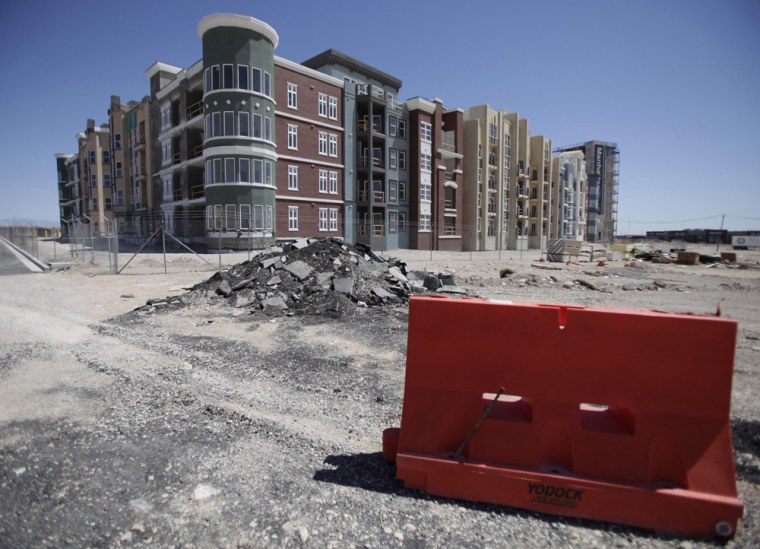The Sun Belt states that grew like fertilized weeds during the real estate boom are now experiencing sharp declines in population growth, the Census Bureau said Wednesday.
Those states are still projected to gain seats in Congress after the 2010 census, while industrial states in the Northeast are likely to lose seats.
But in yet another sign of the recession’s power to reshape established demographic trends, the new figures show that as of July, growth has slowed to a trickle in Arizona, while in Florida, Nevada and California, more Americans moved out than in.
“What we have is a decade of a roller coaster in terms of migration,” said William H. Frey, a demographer at the Brookings Institution. “If you look at the middle part of this decade, Florida led the country in net domestic migration. Now it’s in the negative part of the ledger.”
The shift is especially vivid in state rankings prepared by Mr. Frey. With the new numbers, his analysis shows, Florida now ranks 45th in domestic migration growth after ranking first from July of 2001 to July 2005. It lost 31,179 people to other states from July 2008 to July 2009.
In terms of its total growth rate with foreign arrivals included, Florida now ranks 32nd, down from third in 2002.
Similarly, Nevada has fallen to 17th on the total growth-rate list, after leading the country from 2000 to 2004. It now ranks 36th in domestic migration, losing 3,801 people after adding more than 170,000 from other states from July 2003 to July 2006.
Arizona dropped to eighth in overall growth rate, from first three years ago.
Regions still stand to gain seats
As a corollary, the census figures also show that several states in the Northeast — including Massachusetts, New York and New Jersey — are holding on to more residents. California is experiencing less movement out as well: about 99,000 people left the state as of July, down from 313,000 three years ago.
These shifts, however, do not appear to have dramatically offset the broader trends of the decade, characterized by moves to the South and the West. The new population figures are the last to be released before the 2010 census, and if these conclusions hold, these regions would gain more representation in Congress.
Texas, it seems, is the big winner. It added more people from home and abroad than any other state this year — 231,539. That is more than Florida, Arizona, California, Nevada and Colorado, combined.
Mr. Frey attributed this to a more diversified economy in Texas, and more conservative lending practices during the real estate boom. When combined with the state’s steady growth earlier in the decade, Texas is projected to receive three new seats in Congress, bringing its total to 35.
Arizona, Florida, Georgia, Nevada, South Carolina, Utah and Washington would gain one seat each, according to an analysis of the figures by Andrew A. Beveridge, a Queens College demographer.
States that would lose a seat include Iowa, Illinois, Louisiana, Massachusetts, Michigan, New Jersey, New York, and Pennsylvania. Ohio would lose two, leaving it with 16.
With former industrial states losing seats and states that had been growing gaining, Dr. Beveridge said the new totals pointed to a simple lesson: “The economy trumps everything.”
This story, "Recession Cuts Migration to Sun Belt, New Figures Show," first appeared in The New York Times.
